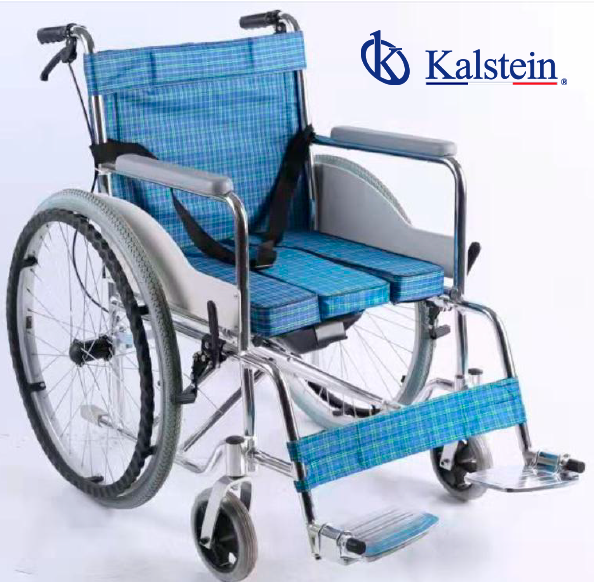Wheelchairs are basic equipment in any self-respecting medical laboratory. These tools not only facilitate the mobility of patients with physical disabilities, but also offer a series of additional benefits for both medical staff and the efficiency of the laboratory in general.
Firstly, wheelchairs allow healthcare professionals to safely and comfortably move patients from one place to another within the laboratory. This is especially useful in cases where it is necessary to mobilize patients who have difficulty walking or ailments that require rest. Additionally, the use of wheelchairs prevents possible injuries to both the patient and the medical staff by ensuring a smooth and controlled transfer.
On the other hand, wheelchairs also contribute to the organization and flow of work in the laboratory. By facilitating patient transport, medical care processes are streamlined and wait times are reduced. This not only improves the patient experience, but also optimizes resource management and the productivity of the medical staff. In summary, having wheelchairs in the medical laboratory is a key aspect of ensuring efficient and quality service.
Key features to consider when choosing a wheelchair for the medical laboratory
When selecting a wheelchair for the medical laboratory, it is important to consider a number of key features that ensure the comfort, safety and durability of the equipment.
First of all, the construction material of the wheelchair is essential to consider. Opting for a sturdy, easy-to-clean model is essential in an environment like a lab where hygiene plays a crucial role. Likewise, patient comfort is an aspect to consider, so it is advisable to choose a wheelchair with padding on the seat and back, as well as adjustable armrests and footrests.
Another important feature to consider is the ease of maneuverability of the wheelchair. In a space like a lab, it is crucial that the equipment allows for precise and fluid movements, so it is advisable to opt for models with swivel wheels and locking brakes. In addition, the wheelchair’s folding and storage capacity is another factor to consider, especially in labs with limited space.
In summary, when choosing a wheelchair for the medical laboratory, it is crucial to pay attention to aspects such as the material, patient comfort, ease of maneuverability, and storage practicality, with the aim of ensuring efficient and safe use of the equipment.
Advantages of investing in a quality wheelchair for the medical laboratory
First of all, a quality wheelchair translates into greater comfort and safety for the patient. Models with ergonomic padding, adjustable armrests, and stable wheels ensure a smooth and comfortable transfer, reducing the risk of injury and contributing to the patient’s well-being. Additionally, the durability and resistance of a quality wheelchair guarantees a longer lifespan, avoiding costly short-term replacements.
On the other hand, investing in a quality wheelchair also improves the efficiency and productivity of the medical lab. The ease of maneuverability of the high-performance equipment enables quick and safe patient transfers, speeding up care processes and reducing waiting times. Likewise, the image of professionalism and care for patients conveyed by the use of quality equipment can be a determining factor in the lab’s reputation and perception.
In summary, investing in a quality wheelchair for the medical lab not only improves patient care and comfort but also benefits the lab’s operational efficiency and image, making it a key investment to guarantee a service of excellence.
If you wish to see the high-end product catalog that we have for you at KALSTEIN, visit us at https://kalstein.eu/categorie-produit/medical-sector/wheelchair/?lang=en We also assure you that through our online PURCHASE channels, which are very easy and viable, you will find the best MARKET PRICES, reminding you that we are a MANUFACTURING Company of high-level Laboratory Equipment for SALE. https://kalstein.eu/?lang=en

